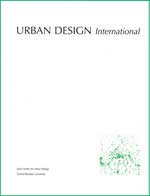
Space Syntax director Kayvan Karimi has edited a special version of Urban Design International devoted to Evidence-informed and analytical methods in urban design.
In his editorial to the new edition, Kayvan writes:
“The first time I came across the need for analytical tools in urban design was almost 25 years ago when I inherited an urban design project for the regeneration and rehabilitation of the historic centre of the city of Shiraz in Iran. The historic core of the city, more recently engulfed by a large modern city, conveys some 1400 years of history and urban heritage but became badly dilapidated and abandoned for a number of complex reasons.
My predecessors on the project had generated layers upon layers of data, from building and physical conditions to social and economic issues. As was customary in the pre-digital era, the data were beautifully presented in hand-painted colour maps nicely decorated with graphic design and calligraphy.
What surprised me about the project was that in parallel to collecting and mapping the data another team was already developing solutions and ideas based on the team’s assumptions and experiences. When asked why we had collected all the data, the reply was that we had to do it as the contract required us to do so! The reply to my further enquiry into how we should use these data was even more astounding. ‘We put the results in a report’, I was told!
During the remaining course of the project, when we were trying to find solutions for physical transformation with least impact on urban heritage and people’s livelihood, I went back to the collected data and tried my best to use it. To a limited extent, even looking at that information was a helpful exercise, but I could not stop wishing for a methodology that could help analyse the data, understand its implications for design and assist in tackling the complex design tasks. It also became absolutely certain to me that all these data and analysis would be meaningless if we could not integrate it directly into a design process.
I am sure the frustration that I felt in that project is shared by a large number of other urban designers, who are confident of their skills and intuition, but feel that their work should be informed by more rigorous and objective methods.”
.